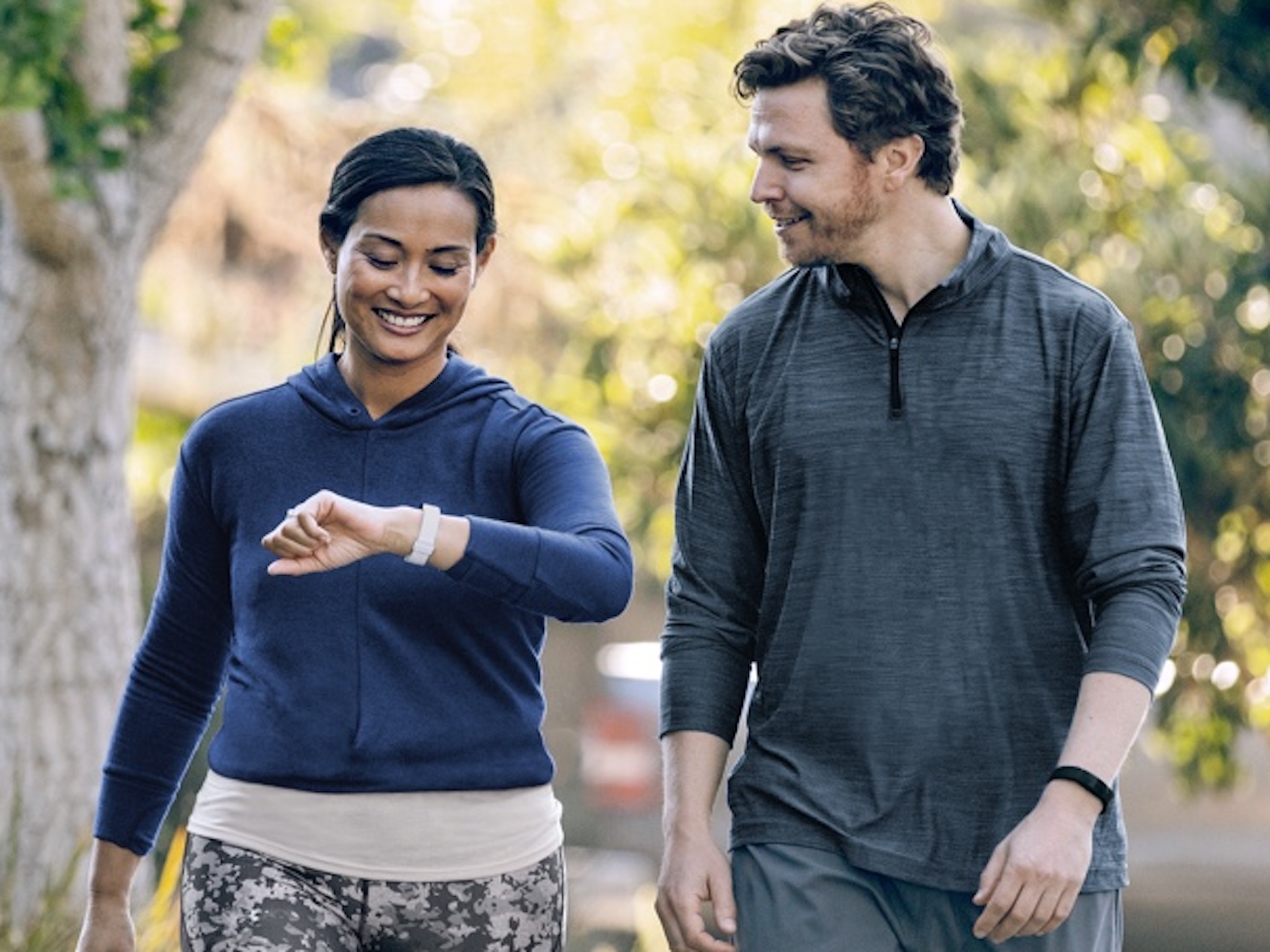
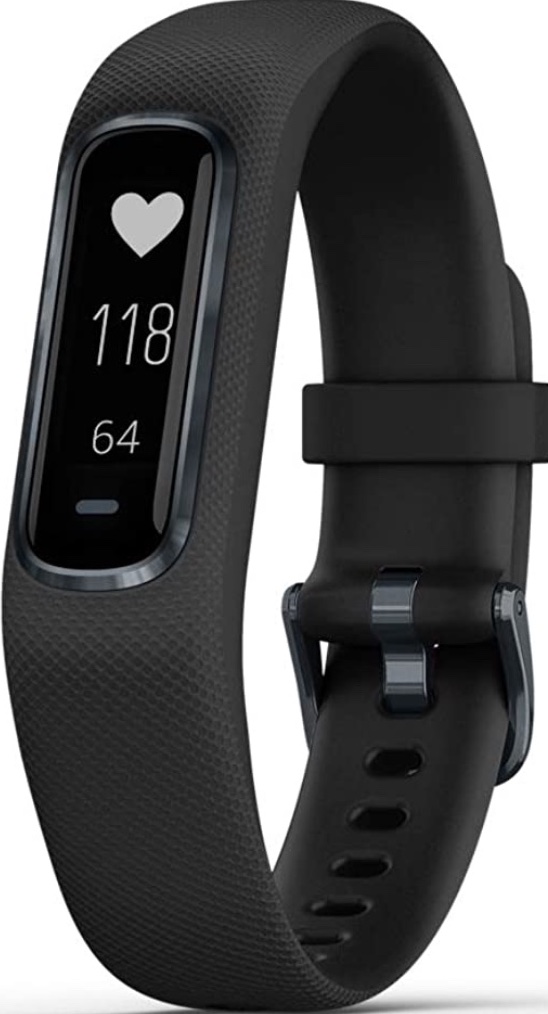
Athlete's favorite
Garmin's Vivosmart 4 is a well-rounded health and fitness tracker that keeps tabs on your stress levels, SpO2, calories burned, sleep, and workouts. If you're an athlete or someone who prioritizes fitness, you'll appreciate the accurate health metrics in this low-profile fitness tracker.
For
- Long battery life
- Activity tracking
- SpO2 monitoring
- Stress tracking
- All-day tracking
- 4 band colors
Against
- Grayscale screen
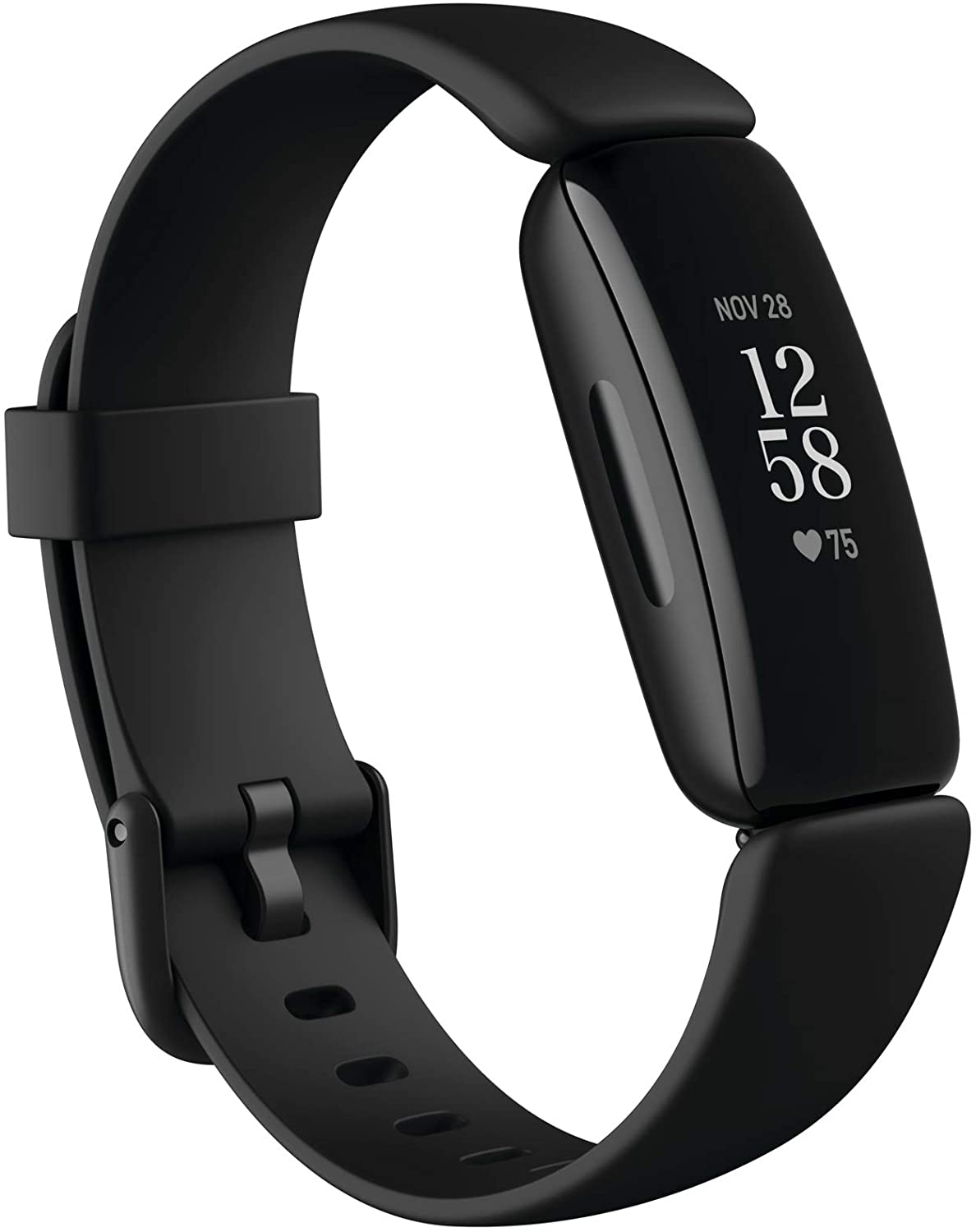
Good, basic tracker
The Fitbit Inspire 2 does the basics well. It'll track your all-day activity, heart rate, and sleep trends but doesn't have SpO2 monitoring. Fitbit's biggest strengths are the large community behind it, a well-developed app, and the ability to challenge other users to competitions to keep each other motivated.
For
- Long battery life
- All-day heart rate monitoring
- Activity + sleep tracking
- Great app
- Large community
- Three band colors
Against
- Grayscale screen
- No SpO2 monitoring
Trying to choose between a full-on smartwatch like the Apple Watch 7 and a fitness tracker focused only on your health and fitness is a tough decision. The Garmin Vivosmart 4 and Fitbit Inspire 2 have gone through a couple of iterations now, so previous bugs have been fixed, and features have been added, making both capable fitness trackers. Which is right for you? Let's dive a little deeper.
Garmin Vivosmart 4 vs. Fitbit Inspire 2: Comparing specs
Garmin's Vivosmart 4 was released in 2018 and is still one of the best fitness trackers out there. It gives you all-day activity tracking, Pulse Ox monitoring, sleep tracking, stress tracking, and even stress monitoring.
The Fitbit Inspire 2 came out in 2020 and remains one of the best Fitbit trackers available today. It records activity and sleep, is swim-proof, and counts calories burned through movement.
These two wearables have more in common than not, but there are a few things that set them apart that may have you leaning hard toward one or the other. Time to dig into the specs.
| Header Cell - Column 0 | Garmin Vivosmart 4 | Fitbit Inspire 2 |
|---|---|---|
| Release date | 2018 | 2020 |
| Battery life | 7 days | 10 days |
| Display | OLED grayscale | OLED grayscale |
| Water-resistant | Yes | Yes |
| Activity tracking | Yes | Yes |
| Sleep tracking | Yes | Yes |
| Stress tracking | Yes | No |
| Swimproof | Yes | Yes |
| Calorie tracking | Yes | Yes |
| Sp02 | Yes | No |
| Notifications | Yes | Yes |
| Built-in GPS | No | No |
| Companion app | Yes | Yes |
| Silent alarm | Yes | Yes |
| Sensors | Accelerometer, altimeter, heart rate monitor, ambient light, pulse oximeter | Accelerometer, altimeter, heart rate monitor, ambient light |
On paper, both wearables are smart-looking trackers that hit all the important things, have well-thought-out apps, mature software and hardware, and come with budget-friendly price tags. The only thing that really sets the fitness trackers apart is which metrics you value more and whether you're a social fitness enthusiast or prefer to go at it alone.
If you need the motivation to exercise and push yourself, the Fitbit Inspire 2 has a larger community you can connect with to compete in challenges and boost your willpower. The Vivosmart 4 also gives you that ability, but Garmin's social userbase is much smaller. The Garmin, however, gives you SpO2 tracking and your Vo2 Max, which are important metrics for overall cardio health.
Let's dive deeper into the similarities and differences.
Master your iPhone in minutes
iMore offers spot-on advice and guidance from our team of experts, with decades of Apple device experience to lean on. Learn more with iMore!
Garmin Vivosmart 4 vs. Fitbit Inspire 2: Garmin is for athletes
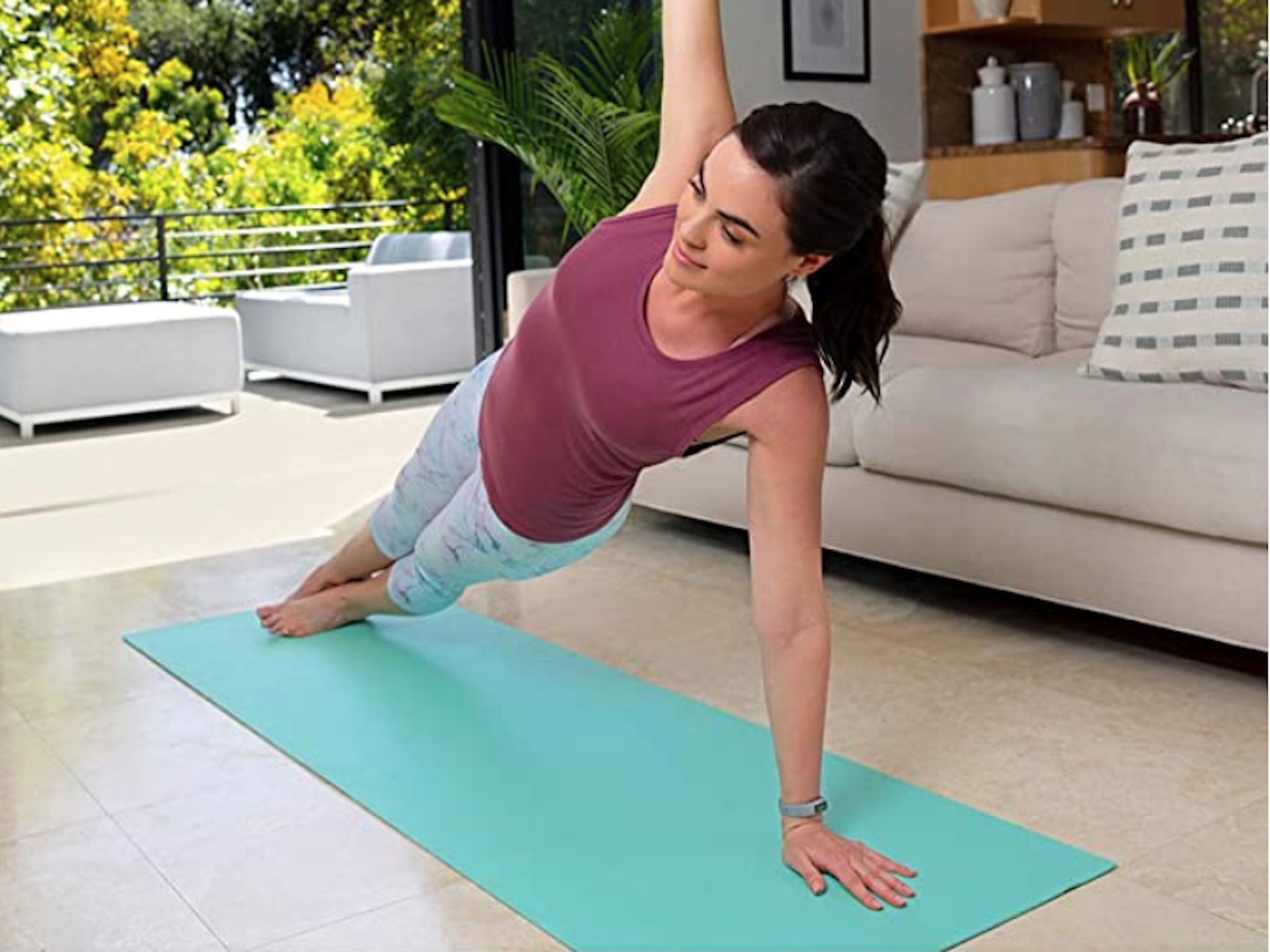
Garmin has been a stronghold in the fitness community since 2003, and they have a good feel for their userbase. Those who jump on the Garmin bandwagon tend to be athletes and serious fitness fanatics who like to challenge themselves and have no trouble getting outside their comfort zone. Garmin users concentrate more on beating their personal best than tallying up more steps than their neighbor.
Garmin has always offered metric-heavy wearables, and the Vivosmart 4 is no different. Even though we'd classify it as a basic fitness tracker, it measures much more than just your daily steps. With the Vivosmart 4, you can count and time laps in the pool or on the track, gauge blood oxygen saturation levels, see your Vo2 Max, time workouts, see your sleep trends, track stress, and use something called "body battery" that's an indication of how much energy you've expended during the day and whether or not you're running on fumes.
Garmin Vivosmart 4 vs. Fitbit Inspire 2: Fitbit builds confidence
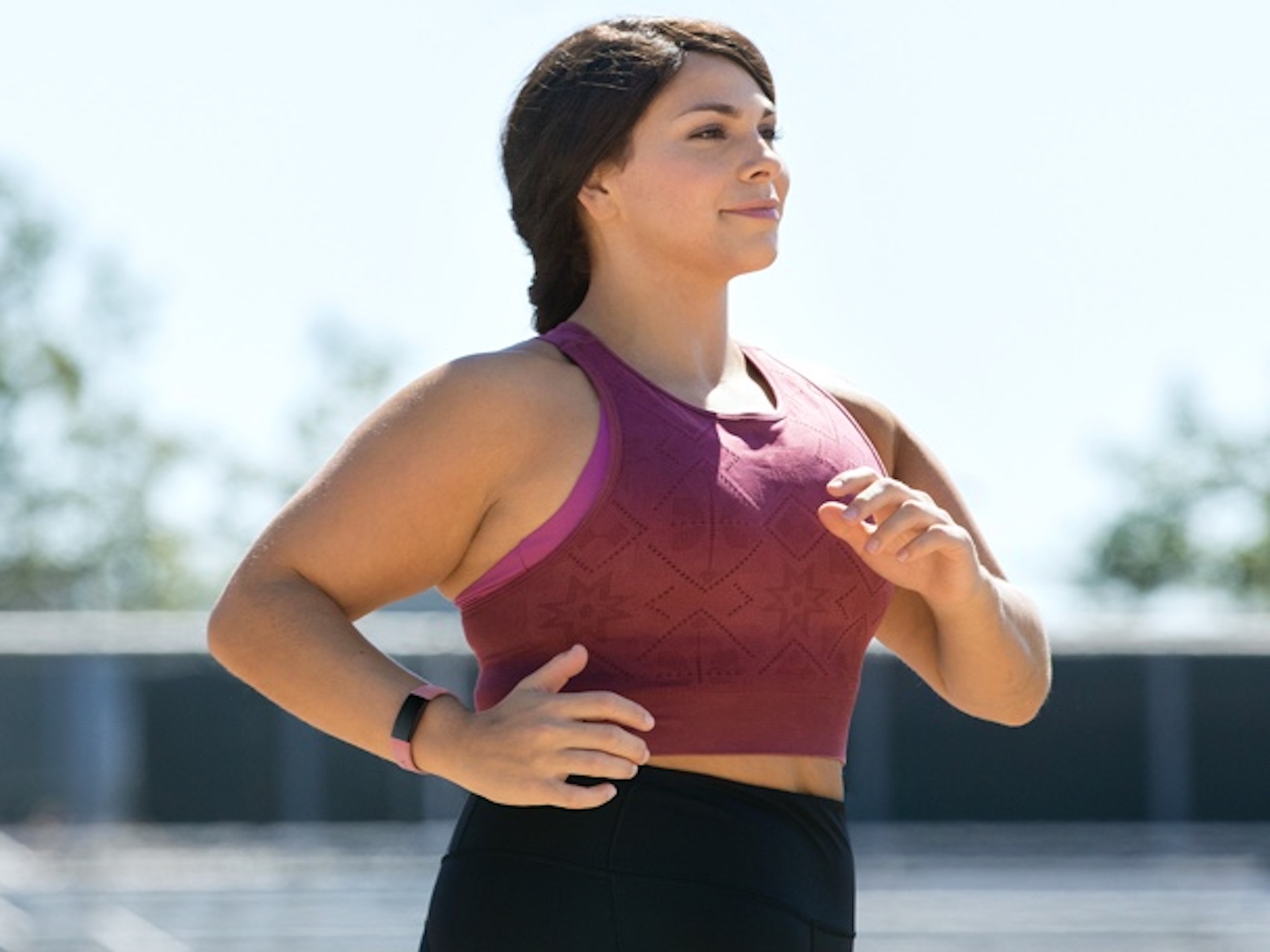
It was Yamasa Corporation that was first to claim that taking 10,000 steps a day is healthy. It will come as no surprise to anyone that the proclamation was part of a marketing campaign to sell pedometers. Fitbit jumped on that bandwagon right away, popularizing it all over again, and, by default, you'll find your Fitbit sets a 10,000 steps-a-day goal. You can change this by digging into the app's menu system.
Like Garmin, the Fitbit Inspire 2 focuses on health and fitness. It does not have an Sp02 sensor, and it can't measure your Vo2 Max, which is a shame, but it measures up to Garmin in all other ways. It'll log your workouts, how many hours you sleep per day, track menstrual health, count laps in the pool, keep track of your heart rate, and, yes, count your steps.
Fitbit caters a bit more to those who get inspiration from others. Both apps provide a way to connect to other users on the same platform and initiate challenges, but Fitbit really champions this category, partly because of its larger userbase. Fitbit challenges can be initiated by anyone and are a fun way to connect with friends and family.
Garmin Vivosmart 4 vs. Fitbit Inspire 2: Neither is a smartwatch
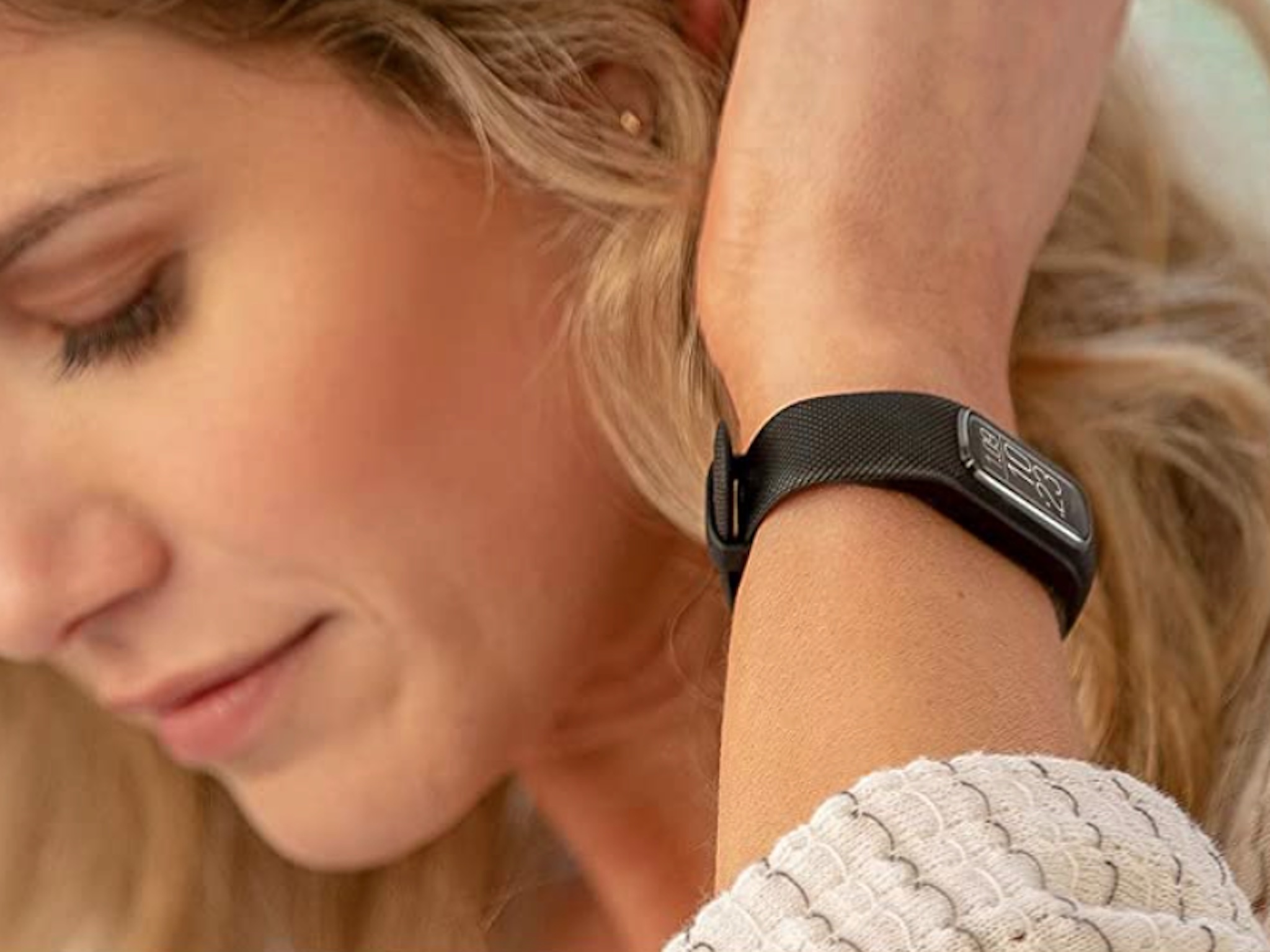
If you're looking for a smartwatch that also does fitness tracking, you'll want to do a U-turn and look elsewhere because neither the Fitbit Inspire 2 nor the Garmin Vivosmart 4 are smartwatches. They do smart things, yes, but you won't get a pretty color display, GPS, or access to music on your best iPhone with either tracker.
Not having a bright screen on 24/7 has benefits, though, and both Garmin and Fitbit rock in the battery department.
Both devices do pretty much the same thing in the smarts department. They notify you of texts, emails, phone calls, calendar events, and voicemail, but that's about it. You cannot initiate a text message or send an email from either device.
Not having a bright screen on 24/7 has benefits, though, and both Garmin and Fitbit rock in the battery department. You'll get up to seven days of battery life from Garmin and up to 10 days out of the Fitbit. So, no more worrying about how to charge your device on weekend hiking trips or vacations. Both wearables should hold out just fine.
Garmin Vivosmart 4 vs. Fitbit Inspire 2: It's all about the apps
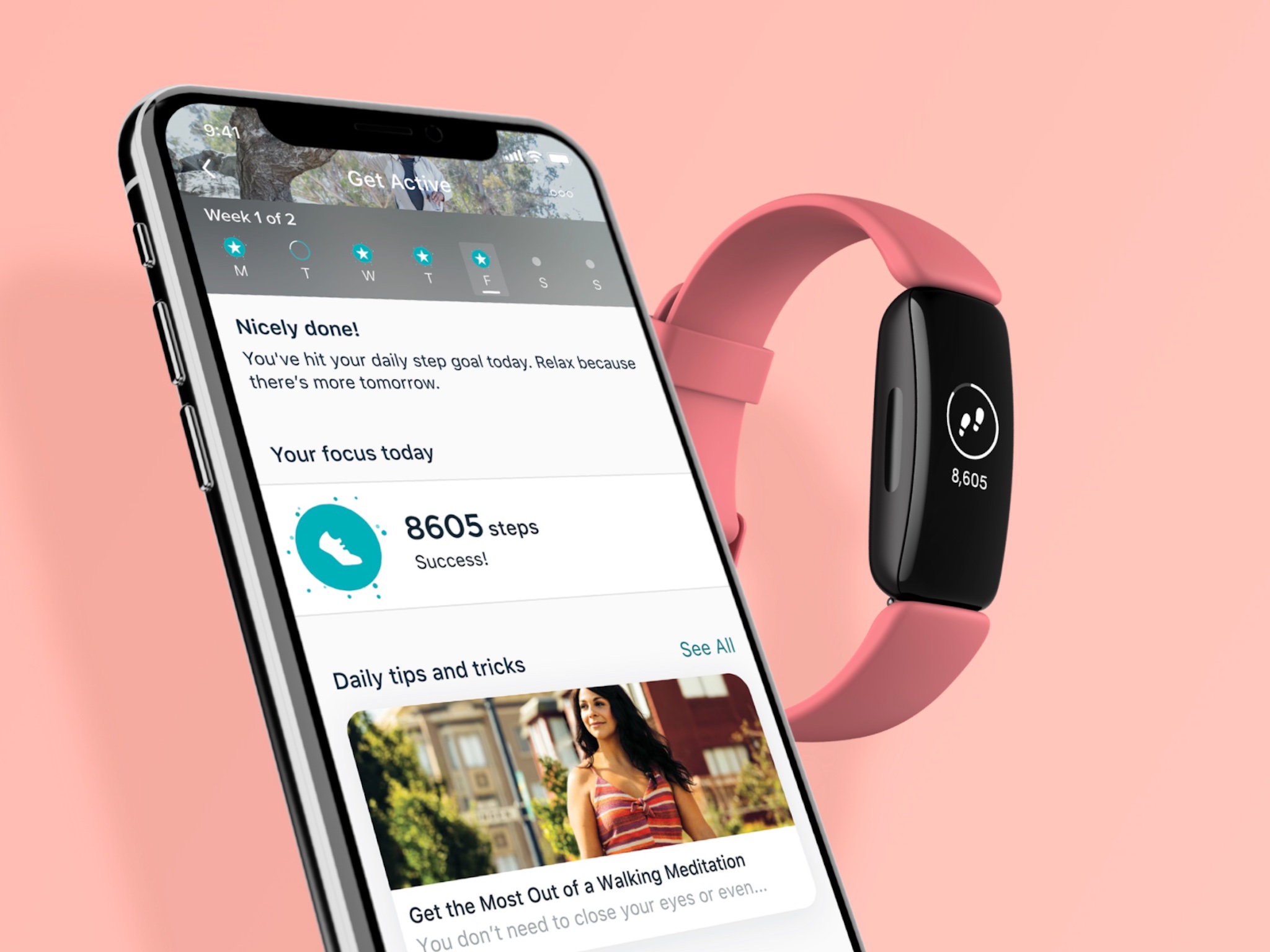
One area where the Garmin Vivosmart 4 and Fitbit Inspire 2 excel is with their apps. Available for iOS and Android, Garmin and Fitbit apps display an incredible amount of detail and help you stick to your fitness goals.
Both apps are free, and Fitbit also has a subscription model for Fitbit Premium that includes access to a library of workouts, mindfulness sessions, health challenges, and healthy recipes. Buying a new Fitbit Inspire 2 gives you a year of Fitbit Premium at no charge. After that, you'll have to shell out $10/month.
Fitbit and Garmin apps give you a place to store and watch your weight, view workout and fitness data, track your health metrics, and see how far you're moving each day. If you take your phone on walks or runs, you can also see the routes you traveled with something called connected GPS. Basically, your wearable uses your phone's built-in GPS to track and monitor your location, and the apps will display a customized map of your travels. It's a helpful tool if you run, hike, or bike, but it does not work unless your phone is on you.
Garmin Vivosmart 4 vs. Fitbit Inspire 2: Which should you buy?
The Garmin Vivosmart 4 and Fitbit Inspire 2 are both worth their asking price and can help you move toward your fitness goals a little faster. If you're an athlete, the addition of Sp02 and Vo2 Max metrics in the Garmin should pull you in that direction. Those numbers let you see your blood oxygen saturation level and how efficiently you're using oxygen during exercise, and both are vital for cardiac health.
If you want to save a few bucks and don't mind not seeing your SpO2 and Vo2 numbers, the Fitbit Inspire 2 is a worthy contender. It'll count pool laps, steps, track your sleep, and keep track of your workouts and weight.
Buying a fitness tracker is a personal decision and one that only you will have to live with. Both trackers are affordable and do all the basics really well.
Jodi Owan works behind a keyboard and a camera. She's a freelance writer for iMore, Android Central, and Windows Central.

